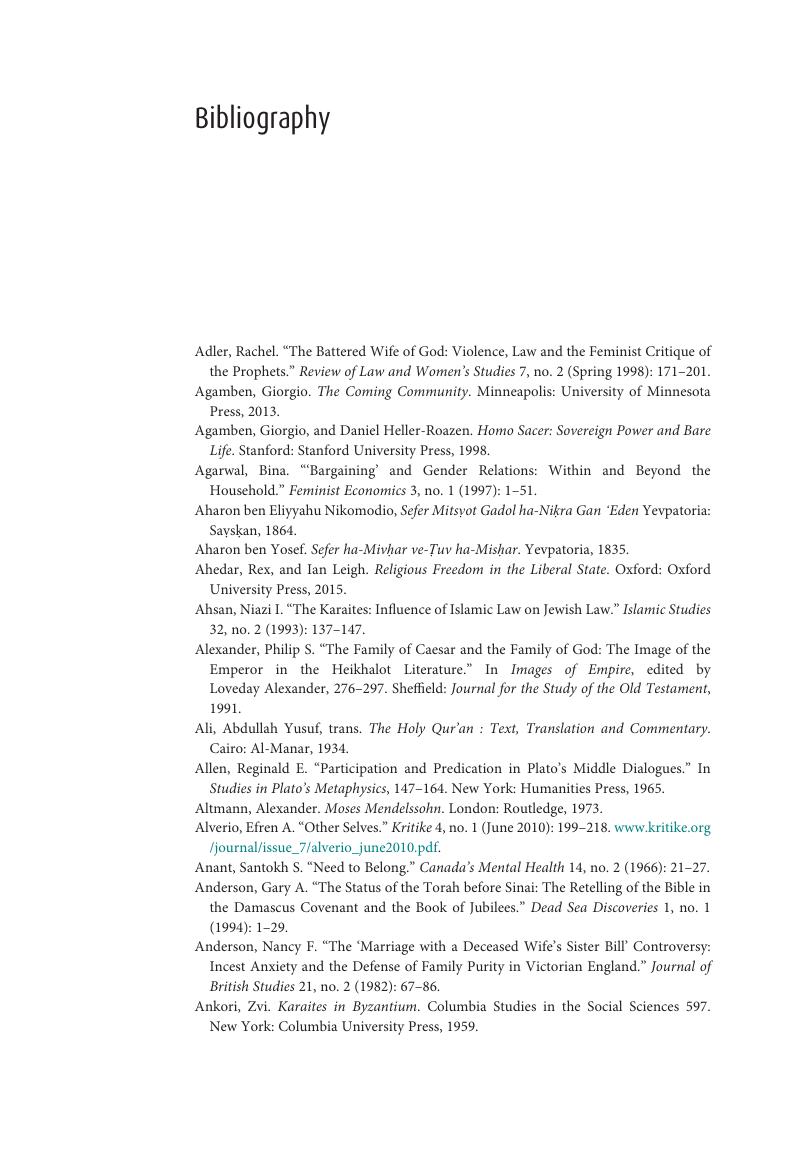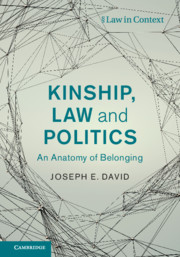Book contents
- Kinship, Law, and Politics
- The Law in Context Series
- International Journal of Law in Context: A Global Forum for Interdisciplinary Legal Studies
- Kinship, Law, and Politics
- Copyright page
- Dedication
- Contents
- Preface
- Introduction: The Anatomy of Belonging
- Part 1 Kinship
- Part 2 Law
- Part 3 Politics
- Bibliography
- Index
- References
Bibliography
Published online by Cambridge University Press: 09 June 2020
- Kinship, Law, and Politics
- The Law in Context Series
- International Journal of Law in Context: A Global Forum for Interdisciplinary Legal Studies
- Kinship, Law, and Politics
- Copyright page
- Dedication
- Contents
- Preface
- Introduction: The Anatomy of Belonging
- Part 1 Kinship
- Part 2 Law
- Part 3 Politics
- Bibliography
- Index
- References
Summary

- Type
- Chapter
- Information
- Kinship, Law and PoliticsAn Anatomy of Belonging, pp. 134 - 152Publisher: Cambridge University PressPrint publication year: 2020



